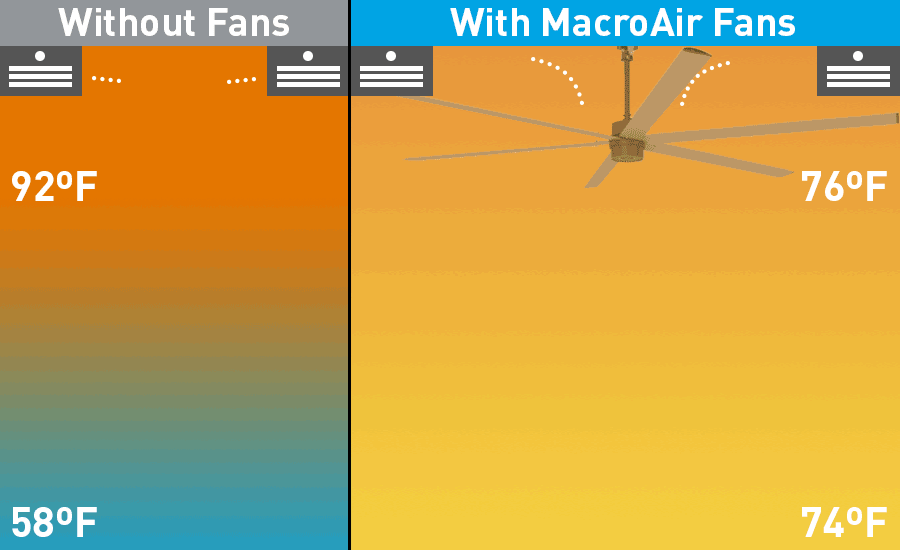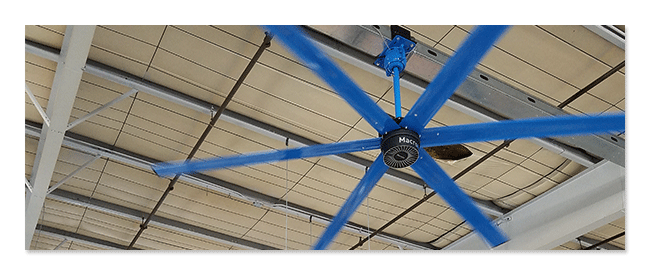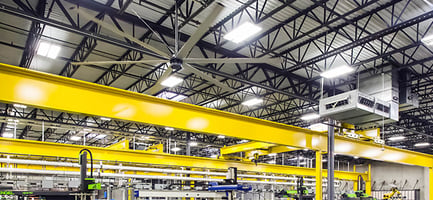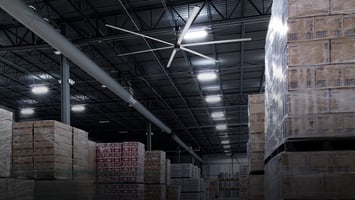You may think the challenge of keeping your warehouse comfortable for employees is finally over,...
The Best Ways to Heat Your Warehouse
According to OSHA, the ideal temperature in a workplace is between 68-76° F. If it is cooler than that, employees become more concerned about staying warm and less on their work. Extreme temps, hot or cold, can ultimately make employees less productive. This is why it is very important to consider how you plan for warehouse heating.
Let’s face it, it is expensive to heat a warehouse! In fact, energy costs for some industrial spaces account for the majority of their total revenue, especially during the winter. According to the US Energy Information Administration, heating and lighting are two of the largest energy uses for warehouses. Together these two things account for 64% of total warehouse energy use. So, let’s get real and find some efficient ways to heat while still being cost-conscious.
Best Options to Heat your Warehouse
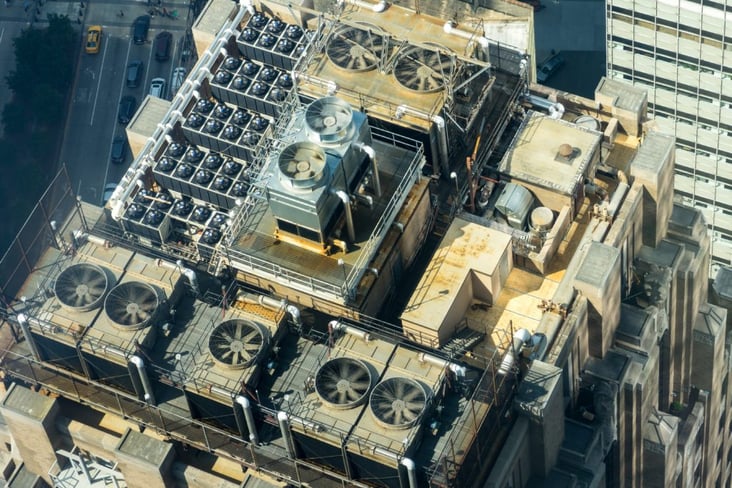
Photo by Sergei A from Pexels
Radiant Heaters
Radiant heating is usually seen as wall mount unit heaters, suspended plaque heaters, or suspended radiant tubes. This heating source is not in the form of pushed warm air. It is in the form of infrared heating. In order for people to feel the heat, they have to stand directly under (or next to) the heat source. Basically, people have to stay close to stay warm.
Radiant floor heat is another option. It is easier for new construction but can be difficult with existing warehouse spaces because the radiant heat coils are placed underfloor. They create an even distribution of heat throughout the warehouse space at ground level. There are three different types of radiant floor heat outlined by energy.gov.
- Air-heated radiant floors – which are basically floors where the air is the heat-carrying method
- Electric radiant floors – which are floors where there are electrical coils
- Hydronic radiant floors – which use hot water to heat the floors.
Warm Air Heating
Warm air heating is a great option. Unlike radiant heating, which heats only those within close proximity of the heater, warm air heating pushes warm air throughout the space. In fact, in order for warm air heating systems to work well, they must be well designed into the warehouse layout. Place them strategically to ensure that each nook and cranny of the building is warmed. Additionally, for the warm air to be evenly dispersed throughout the building, heat has to move around free from any obstructions (racking, dividers, walls).
There are a couple of different options with warm air unit heating. You can get electric or gas heaters, floor mount or ceiling, and all different sizes and fuel types depending on your warehouse. Consider the needs and challenges of your warehouse space. Also, consider the type of ventilation and durability you require. Take into account the hazardous materials or pollutants your warehouse handles. Also, remember the required air quality standards that must be maintained for employee safety. Be aware of the adverse effects of poor ventilation and why it is a critical piece of your warehouse.
Maintain Your Unit
Whatever method of heating you decide upon, maintain your unit! Poorly maintained heaters are in fact a health risk. They also don’t heat warehouses as efficiently as possible. Poor maintenance leads to unnecessarily high energy costs and a poorly heated space. Commit to regular maintenance of your heat units in the months leading up to and during winter. This will ensure they are in good working order and longer unit life.
Other Ways to Keep Your Warehouse Warm
Seal Doors and Windows
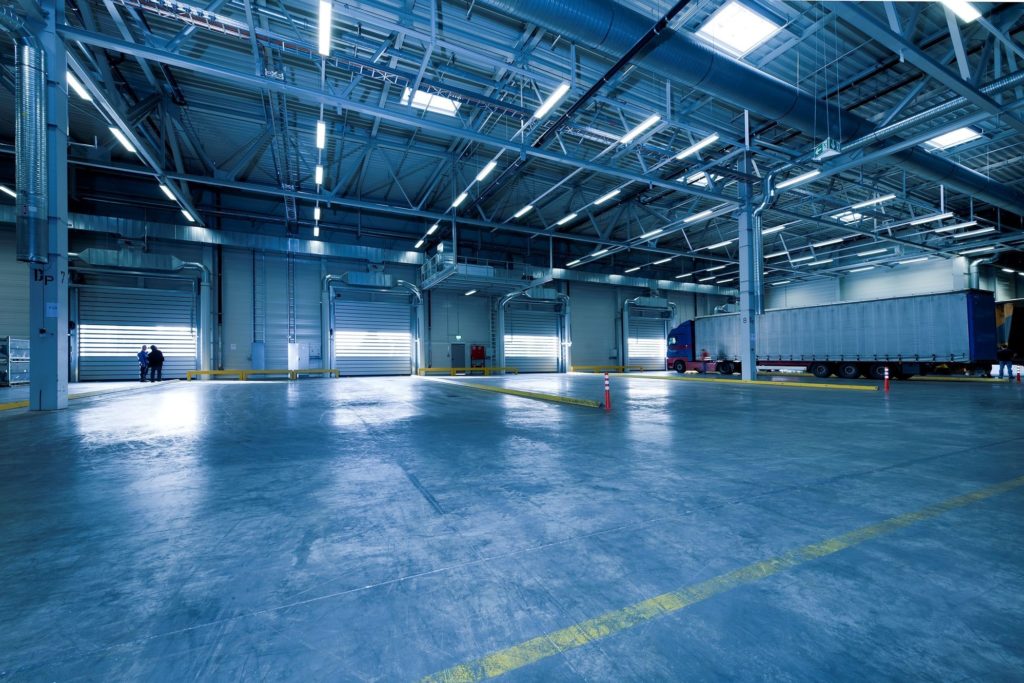
Warehouse doors and windows are a major source of heat loss. It’s impossible to keep doors closed at all times because shipments are constantly moved in and out. Furthermore, colder temps can damage inventory, make employees uncomfortable, and create higher energy bills.
To prevent heat loss during cold weather, do the following:
- install insulated dock panel doors
- use insulation kits
- add weatherstrips
- seals to the gaps at the tops, bottoms, and sides of the doors
- install high-speed doors.
Heat Distribution
Heating systems are usually located above the floor or by the ceiling in warehouses to avoid interfering with daily operations and to free up valuable floor space. Since heat tends to stay up high near the ceiling, temperatures on ceilings can be up to 35º higher than on the floor level.
Installing MacroAir’s High Volume, Low Speed (HVLS) ceiling fans help to distribute warm air throughout a warehouse during cold winter months. Their huge ceiling fans heat large spaces just as well as they cool them off – in a less expensive way than most!
Using HVLS Fans In Reverse Function
Try as they may, warm air heating units may not effectively distribute warm air throughout an entire warehouse. This leaves large cold spots which are not good for inventory or for employees. MacroAir’s HVLS ceiling fans can run in reverse! The reverse function helps distribute heat throughout a warehouse during cold winters.
Operating a fan in reverse heats up the entire warehouse by pushing warm air provided by the heating system upward and outward, forcing the layer of hot air to distribute down the warehouse walls and evenly across the floor. The fans move the collected warm air down from the ceiling and out around the room, which provides a comfortable climate for all parts of the warehouse.
Utilizing the reverse function of large industrial fans along with the practices found in this blog will help you with warehouse heating during the winter months and lower operating costs.
Click the link below to learn more about our MacroAir ceiling fans.
Get your fan on order today.
